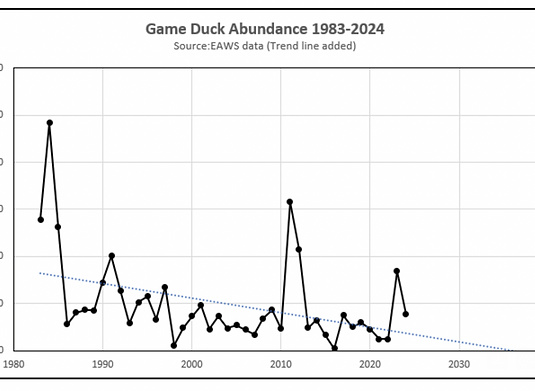
Independent, comprehensive scientific data we can trust.
Every October for 40 years, expert independent researchers have surveyed wetlands and waterbirds across Eastern Australia.
These surveys have built up one of the country’s most important long-term data sets on the health and biodiversity of our river and wetland environments.
Up to 2,000 wetlands and rivers are surveyed observing up to 50 different waterbird species, including threatened species.
Sadly, data shows a continued long term decline in all waterbird indices: abundance, habitat and breeding.
The 34th (2016) survey showed waterbird numbers were at their lowest levels ever recorded.
The 35th (2017) survey showed abundance remained well below long term average with many game bird species numbers low "by order of magnitude"
Had we protected them from shooting, juveniles could have bred and assisted in bird number recovery. Instead, a further season was allowed and higher than usual numbers of immature birds were found in shooters bags inspected by authorities.

Above:
Graph of game duck abundance indices as per GMA “Considerations” document each year, It appears twice in the most recent “Considerations” document (see the red plot on p24 and p33). The value of the game duck abundance index for each year is obtained by adding together the EAWS count for each game species, contained in the EAWS reports.
The 36th (2018) survey unsurprisingly, showed a further decline in numbers, well below average with game bird species - many unique to our country - low by order of magnitude.
The 37th survey showed significant long term declines in all major indices. Wetland area index was the lowest ever recorded since surveys began. There was little if any breeding, with swans and ibis accounting for 97% of what little there was.
The 38th survey (2020) showed continued decline in all critical waterbird indices despite significant rainfall. "Game bird" numbers in particular declined a further 23% from the already low numbers of 2019.
The 39th survey (November 2021) shows continued long-term decilne in all waterbird indices. "Game bird" numbers fell by more than half (58%) from the previous year.
The 40th, despite two consecutive La Niña seasons, shows our native ducks still in free-fall and for the most part, not breeding.
Labor governments have cancelled native waterbird shooting seasons in 2003, 2007 and 2008 for less dire circumstances.
The Andrews Labor government continues to allow native waterbird shooting despite the worst environmental conditions ever recorded and little if any data of the impact of duck shooting to protected species..

